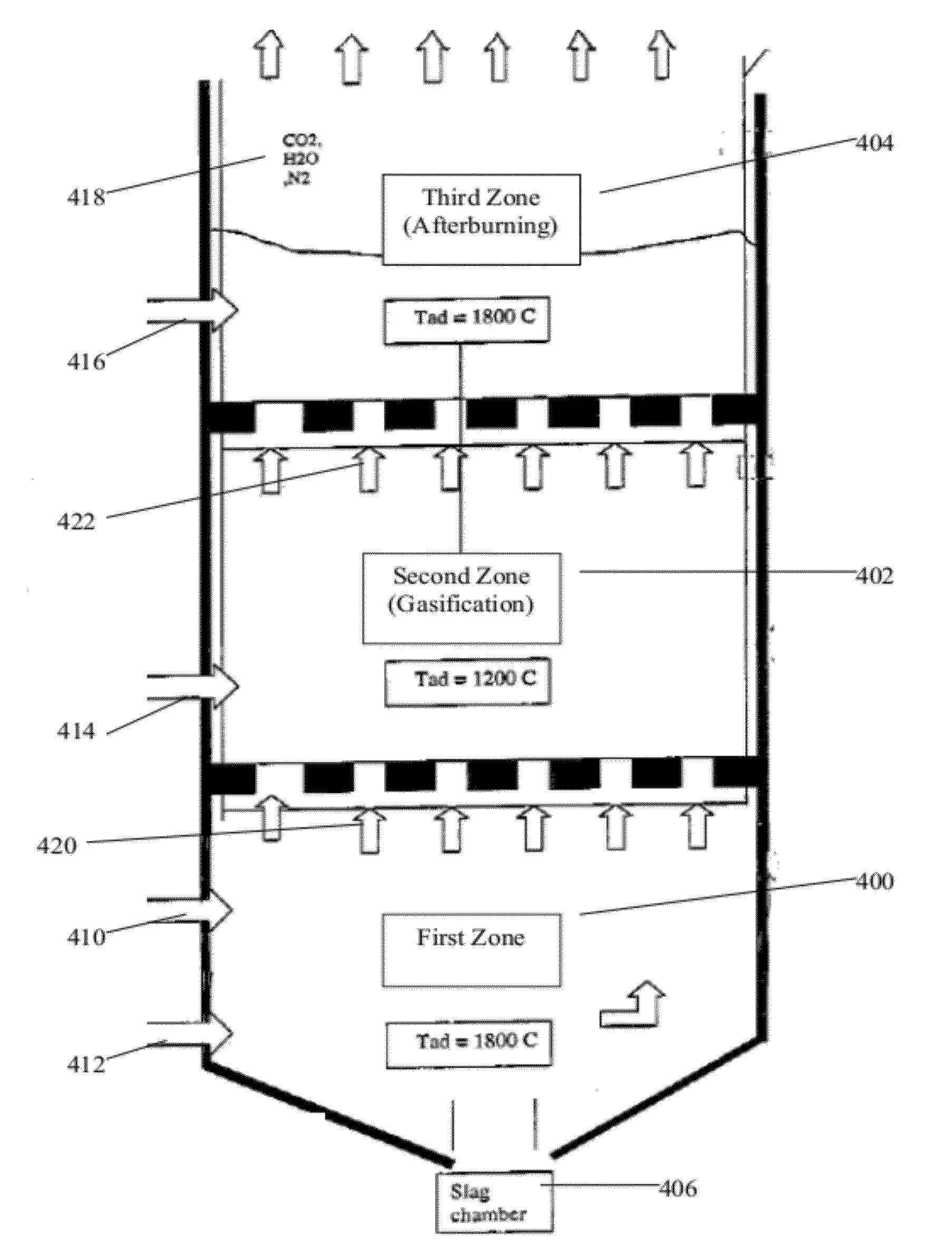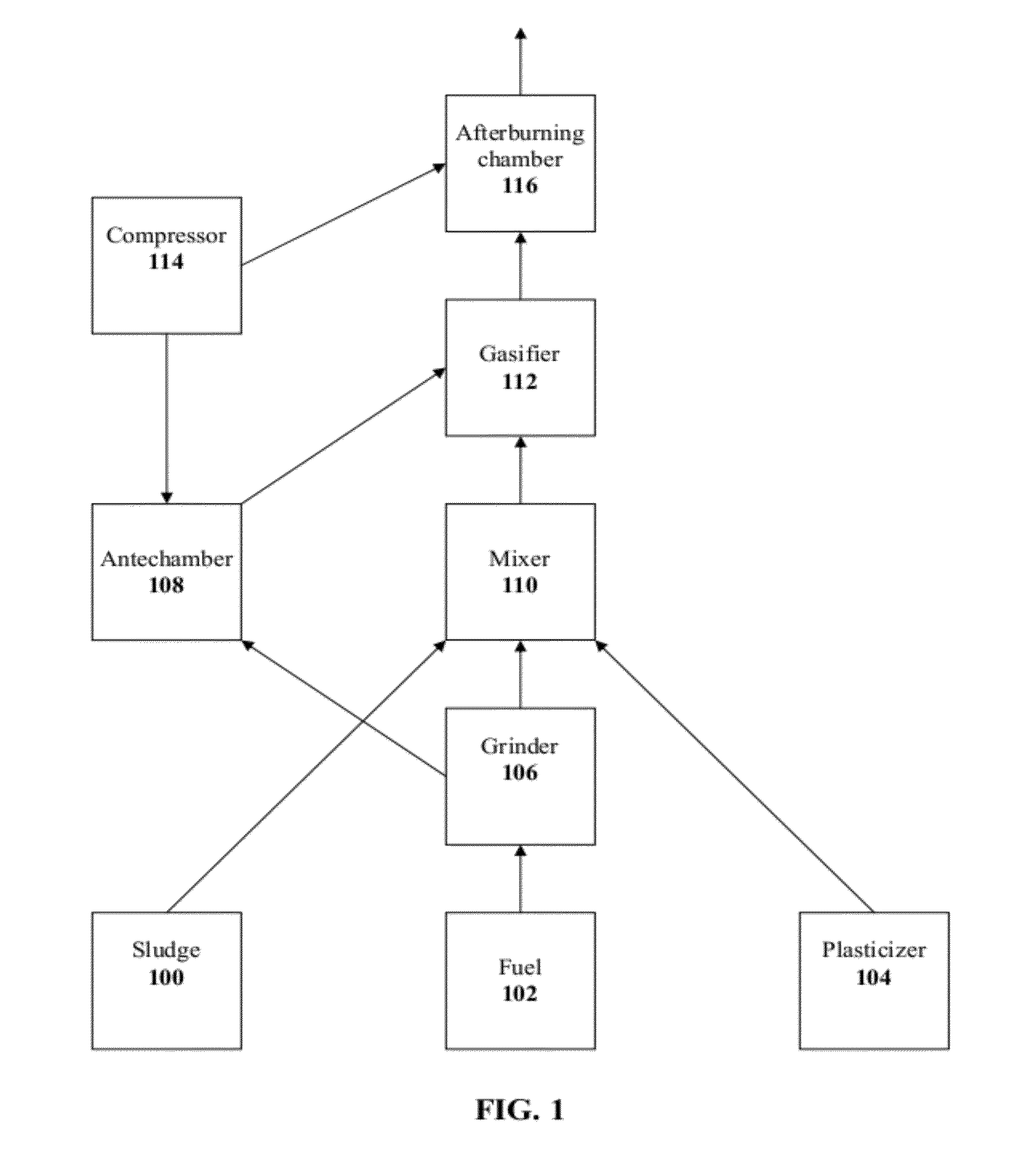Method and system for treating sewage sludge
- Summary
- Abstract
- Description
- Claims
- Application Information
AI Technical Summary
Benefits of technology
Problems solved by technology
Method used
Image
Examples
example 1
Sewage Sludge Treatment System with Combined Cycle Power Generation
[0150]FIG. 3 shows a scheme of an exemplary system which combines treatment of sewage sludge and power generation. FIG. 3 shows the basic components as shown in FIG. 1, with the addition of more details, including a combined cycle comprising gas turbine 350 and steam cycle 390 for generating power.
[0151]The system comprises a grinder 300 (e.g., a colloidal mill) for grinding a solid fuel (e.g., coal) in solid form or as a slurry. Grinder 300 receives fuel through an inlet 302, and ground fuel exits through an outlet 304 to both a mixer 310 and an antechamber 320. Mixer 320 receives fuel through an inlet 312 and sludge through an inlet 314, and optionally also plasticizer through an optional inlet 316. Mixer 310 produces a suspension of ground fuel in sludge, optionally stabilized by the plasticizer, which exits through an outlet 318 to a gasifier 330. An antechamber 320, which operates as a combustion chamber, receiv...
example 2
Unified Module for Gasification and Combustion
[0153]FIG. 4 depicts an exemplary furnace comprising three zones, which can perform gasification of sewage sludge and combustion of the gas produced by gasification.
[0154]A first zone 400 receives solid, liquid and / or gaseous fuel (e.g., coal, gas, gasoline) and oxygen (e.g., air) via suitable inlets 410 and 412, and the fuel undergoes combustion therein, resulting in a temperature of about 1800° C. Slag remaining from combustion falls into a slag chamber 406, and can be readily disposed of.
[0155]A second (gasification) zone 402 receives a fuel / sewage sludge suspension via a suitable inlet 414, as well as heat and hot combustion products 420 from the first zone. The temperature in second zone 402 is about 1200° C., at which temperature the suspension is gasified readily to CO and H2 gas. Optionally, second zone 402 receives fuel and sewage sludge (and optionally a plasticizer) via separate inlets (not shown), and further comprises a mixe...
PUM
 Login to View More
Login to View More Abstract
Description
Claims
Application Information
 Login to View More
Login to View More - R&D
- Intellectual Property
- Life Sciences
- Materials
- Tech Scout
- Unparalleled Data Quality
- Higher Quality Content
- 60% Fewer Hallucinations
Browse by: Latest US Patents, China's latest patents, Technical Efficacy Thesaurus, Application Domain, Technology Topic, Popular Technical Reports.
© 2025 PatSnap. All rights reserved.Legal|Privacy policy|Modern Slavery Act Transparency Statement|Sitemap|About US| Contact US: help@patsnap.com



